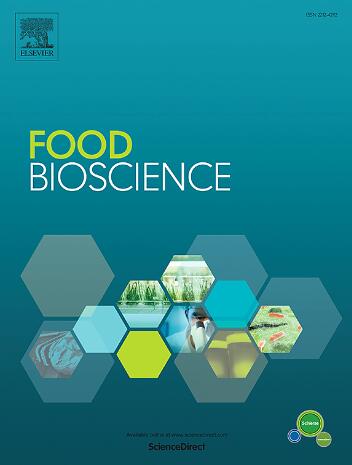泡菜制作过程中的风味化合物特征和增强策略
IF 4.8
1区 农林科学
Q1 FOOD SCIENCE & TECHNOLOGY
引用次数: 0
摘要
乳酸发酵是一种传统的保存技术,可以改善蔬菜的质地和风味。在韩国菜中,泡菜因其迷人而复杂的香味而备受推崇,吸引着当地和全球的食客。然而,以前的综述中并没有全面的风味化合物清单。本综述旨在说明泡菜的风味化合物、其起源以及影响其调节的因素。文中详细介绍了泡菜制作过程中的关键步骤,包括原材料的选择、腌制、搅拌和发酵。还讨论了各种风味化合物,如糖、有机酸、游离氨基酸和挥发性化合物,以及它们在泡菜制作过程中风味形成的主要来源和作用。此外,该综述还强调了如何操纵内在和外在因素,如添加次要配料、盐度、温度、起始培养物、pH 值和发酵时间,以优化风味特征。可以鼓励微生物的生长,以产生特定的代谢物,从而获得符合最终消费者喜好的理想口味和香气。还需要开展进一步的研究调查,以解决潜在的卫生问题和控制这些问题的方法、添加起始培养物以增强特定风味的益处,以及更好地开发这种传统发酵食品的创新潜力。本综述对了解配料、微生物群落和发酵条件之间的相互作用很有价值,有助于深入了解如何制作既能满足消费者喜好又能保护其文化遗产的泡菜。本文章由计算机程序翻译,如有差异,请以英文原文为准。
Flavor compound profiles and enhancement strategies in the kimchi-making process
Lacto-fermentation is a traditional preservation technique that improves the texture and flavor of vegetables. In Korean cuisine, kimchi is highly regarded for its captivating and complex aroma, which appeals to both local and global palates. However, there is no comprehensive list of flavor compounds previously reported in a review. This review aims to illustrate the flavor compounds of kimchi, their origins, and the factors that influence their regulation. Key steps in the kimchi-making process, including the selection of raw materials, salting, mixing and fermentation are detailed. Various flavor compounds such as sugar, organic acids, free amino acids and volatile compounds are discussed in relation to their main origin and roles in flavor development during the kimchi-making process. Furthermore, the review highlights how intrinsic and extrinsic factors such as the addition of minor ingredients, salinity, temperature, starter culture, pH and fermentation time can be manipulated to optimize flavor profiles. The growth of microbes might be encouraged, to produce specific metabolites for a desired taste and aroma that meet the preferences of end consumers. Further research investigations are required to address potential sanitary issues and ways of controlling them, the benefits of adding starter culture to enhance specific flavors, and to better exploit the potential for innovation of this traditional fermented food. This review is expected to be valuable for understanding the interactions between ingredients, microbial communities and fermentation conditions, providing insight into creating kimchi that meets consumer preferences while preserving its cultural heritage.
求助全文
通过发布文献求助,成功后即可免费获取论文全文。
去求助
来源期刊

Food Bioscience
Biochemistry, Genetics and Molecular Biology-Biochemistry
CiteScore
6.40
自引率
5.80%
发文量
671
审稿时长
27 days
期刊介绍:
Food Bioscience is a peer-reviewed journal that aims to provide a forum for recent developments in the field of bio-related food research. The journal focuses on both fundamental and applied research worldwide, with special attention to ethnic and cultural aspects of food bioresearch.
 求助内容:
求助内容: 应助结果提醒方式:
应助结果提醒方式:


